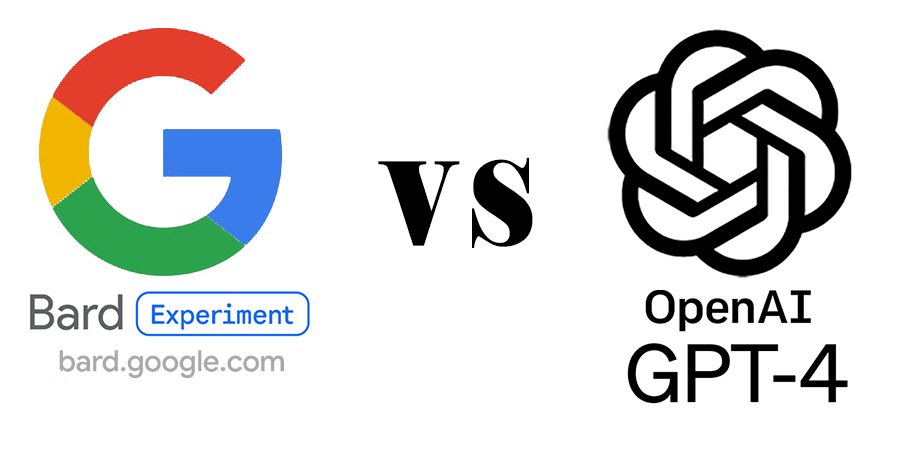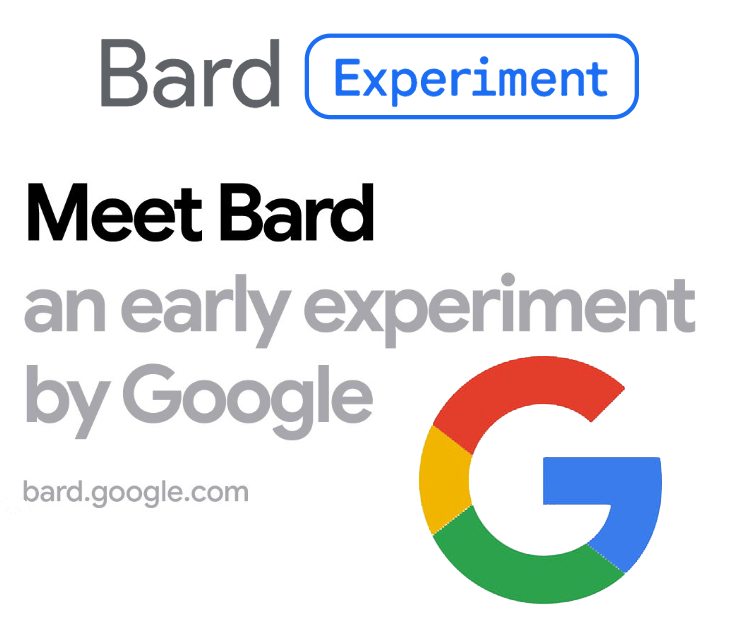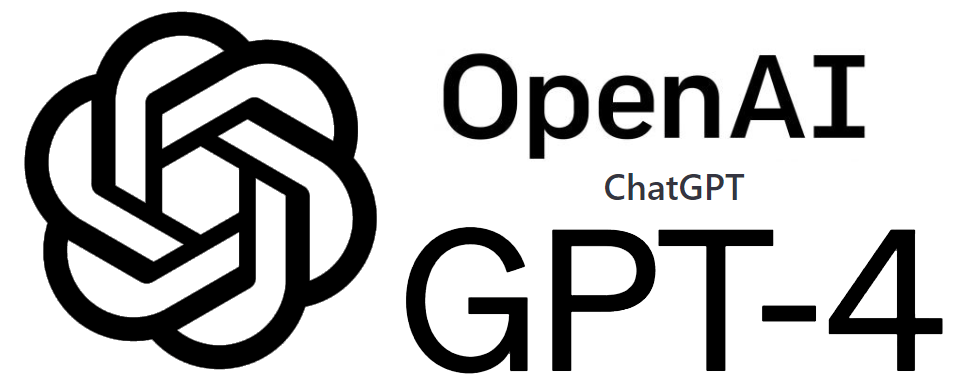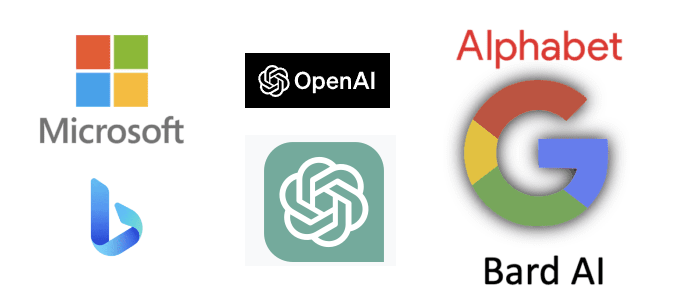Who’s Better, Bard or GPT-4?

Who’s Better, Bard or GPT-4? A reader asks…
Ok, I’m looking at your previous article about AI, and you mention Bard, Google’s AI. You also ended that article with a short answer from GPT-4 as to why it was the best. Can you give me a bit more comparison of the two to help me decide which I should use for writing projects?
I would caution you on how you use artificial intelligence (AI) tools for writing projects. any AI tool can be a big help when creating initial rough drafts, outlines, and even chapter-writing. But I stress – rough drafts! Both are excellent starting points for any writing project you may have. But then you need to validate everything your AI provided, and re-write things in your own voice.
And there’s really no need to choose one or the other, you can use both to generate material, and then pick and choose what you want to use. I really don’t think one is better than the other overall, but let’s allow each one to tell you for themselves which they think is better and why. I posed this question to Bard:
Draft a 4 paragraph article on why Bard is better than GPT-4, written as a professional technology expert.
Here’s Bard’s response:

| Bard and GPT-4 are two of the most popular large language models (LLMs) on the market. Both models are capable of generating text, translating languages, and answering questions. However, there are some key differences between the two models that make Bard better than GPT-4 for certain tasks. One of the main advantages of Bard is its ability to generate more creative text formats. GPT-4 is limited to generating text in a single format, such as a paragraph or a list. Bard, on the other hand, can generate text in a variety of formats, including poems, scripts, and musical pieces. This makes Bard a better choice for tasks that require creativity, such as writing a marketing campaign or creating a piece of art. Another advantage of Bard is its ability to access and process information from the real world. GPT-4 is limited to processing information that is stored in its database. Bard, on the other hand, can access and process information from the real world through Google Search. This makes Bard a better choice for tasks that require access to up-to-date information, such as writing a news article or providing customer support. Overall, Bard is a better choice than GPT-4 for tasks that require creativity, access to up-to-date information, and the ability to generate text in a variety of formats. In addition to the above, Bard is also better than GPT-4 in terms of its accuracy. In a recent study, Bard was found to be more accurate than GPT-4 in answering questions about factual topics. This is likely due to Bard’s ability to access and process information from the real world through Google Search. GPT-4 is still a powerful language model, but it is not as well-suited for certain tasks as Bard. If you need a language model that can generate creative text, access and process information from the real world, and generate text in a variety of formats, then Bard is the better choice. |
I then posed the same question to ChatGPT (recognize I don’t have access to GPT-4, just GPT3.5 Turbo):
Draft a 4 paragraph article on why GPT-4 is better than Bard, written as a professional technology expert.
Here’s ChatGPT’s response:

| The arrival of GPT-4 has been highly anticipated, and for good reason. As a language model built on the latest advancements in artificial intelligence (AI), GPT-4 promises to outperform its predecessor and even challenge the reigning king of AI language models, the legendary GPT-3. But how does it compare to Bard, another popular language model? First and foremost, GPT-4 boasts significantly larger and more diverse training data compared to Bard. This means that GPT-4 has been exposed to a wider range of texts, including scientific papers, legal documents, and historical archives, allowing it to generate more accurate and contextually relevant responses to a wider range of queries. This is a key advantage over Bard, which is primarily trained on literary texts and may struggle to respond to more specialized inquiries. Secondly, GPT-4 incorporates several advanced techniques in AI, including deep learning and unsupervised learning, that were not available during Bard’s development. These techniques enable GPT-4 to learn from data in a more sophisticated manner, allowing it to generate more coherent and human-like responses. For example, GPT-4 can recognize and adapt to the tone and style of a particular text, making it more versatile and better equipped to generate responses that align with the user’s intentions. Another key advantage of GPT-4 over Bard is its ability to generate longer and more complex texts with fewer errors. GPT-4 has been trained on a wide range of writing styles and genres, from journalism to academic writing, which has equipped it with the ability to generate more nuanced and structured responses. Additionally, GPT-4 incorporates advanced techniques in grammar and syntax analysis, allowing it to detect and correct errors in real-time, making it a highly reliable and efficient language model. In conclusion, GPT-4 represents a significant improvement over Bard in terms of its capabilities and performance. With its larger and more diverse training data, advanced AI techniques, and ability to generate longer and more coherent texts with fewer errors, GPT-4 is poised to become the leading language model in the field of AI. As AI continues to evolve and shape the way we interact with technology, the arrival of GPT-4 marks an important milestone in the development of this exciting and rapidly growing field. |
All right, let’s parse this out:
- Bard says it’s for more creative types of output, while OpenAI says it’s better for specialized topics
- Bard says it’s got access to current info on the internet, OpenAI says it’s got a larger dataset
- Bard says it’s more accurate, while OpenAI says it’s more accurate
- OpenAI says it can handle longer and more involved responses

As to my real-world experience, I’ve found OpenAI’s ChatGPT to be a little loose with facts, and can often make up factual data and even references. Bard can generate great references from its built-in Google Search capability, while ChatGPT is dependent on its own data set (which is a couple of years old, so the latest information on the internet isn’t available).
In case you’re wondering, Microsoft is integrating OpenAI’s product into their Bing, Edge and MS365 products, while Bard is being integrated into the Google ecosphere. So far, Apple has been mum on the subject, and we all know how limited Siri is. We’ll see what Apple does this summer. I do see that Google is going to be integrating Bard in all its products as quickly as it can.
Looking at other reviewers, I’m told that Bard is great at giving examples, GPT-4 is great at giving copious, relevant data in response to prompts. In both cases, good “prompt engineering” can make a huge difference in the quality of results.
My advice, the more time you spend on engineering a good prompt, or sequence of prompts for whatever writing project you intend to do, the more it will pay off for you in higher quality output from either Bard or ChatGPT (or both). If you’re shooting for anything longer than a few paragraphs of text, consider starting with a prompt to generate a premise, then prompt for an outline, then prompt for completing each part of the outline. You can finish by prompting for a bibilography if needed. If you ask for specific references as part of your prompts, you should double-check those against the live internet, along with other fact-checking. After all, it’s incumbent on you to make sure that what you’ve gotten from your AI is quality work. Only then can you go to work to turn the rough draft into something better.
Another thing to consider in comparing the two: Cost. Bard is currently free, and is described as “experimental”. ChatGPT3.5 Turbo is also free, but GPT-4 has a cost (and a waiting list). And finally, there’s availability and responsiveness. ChatGPT3.5 turbo is offered by OpenAI for free, but $20/month gets you a faster response time. I’ve found both Bard and ChatGPT to vary quite a bit in terms of responsiveness, sometimes very slow, and sometimes quick. That speed of return doesn’t seem to have any impact on the results that are generated, probably just a function of how much available machine time is at any moment.
This website runs on a patronage model. If you find my answers of value, please consider supporting me by sending any dollar amount via:
or by mailing a check/cash to PosiTek.net LLC 1934 Old Gallows Road, Suite 350, Tysons Corner VA 22182. I am not a non-profit, but your support helps me to continue delivering advice and consumer technology support to the public. Thanks!







